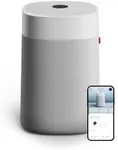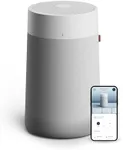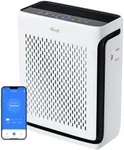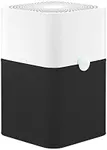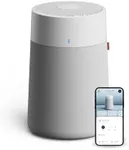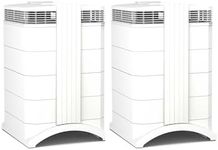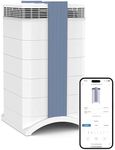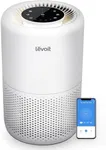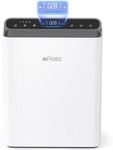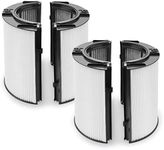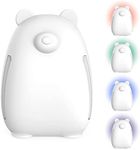Buying Guide for the Best Personal Air Purifiers
Choosing the right personal air purifier can really improve the quality of the air you breathe, whether at home, work, or when traveling. When picking one, it’s important to think about the places you’ll use it and the specific needs you have—like allergies, asthma, dust, or odors. Good personal air purifiers should be easy to use, portable, and effective for your space. Carefully checking key features will help you find one that best fits your living or working environment and breathing needs.Filtration TypeFiltration type refers to the technology the purifier uses to clean the air. Common types are HEPA filters, activated carbon, and ionizers. HEPA filters are great for trapping fine particles like dust and pollen, activated carbon absorbs gases and odors, while ionizers help eliminate pollutants by using charged particles. If you mostly worry about particles like allergens, HEPA filters are ideal. For smell or smoke, activated carbon is useful. If you want a lightweight solution and don’t mind some ozone, ionizers can work. Your main concern (dust, pollen, odors, smoke) should guide your filtration choice.
Coverage AreaCoverage area tells you how much space the purifier can clean effectively, usually measured in square feet or meters. Smaller units cover areas like desktops or small rooms, while larger ones handle bigger spaces. If you’re using it for a small office desk, car, or your bedside, look for a unit with a lower coverage rating. For whole rooms or shared spaces, select something powerful enough for the size of that area. Picking the right coverage area ensures efficiency, so match the purifier’s range with the size of the space you want cleaner air in.
CADR (Clean Air Delivery Rate)CADR stands for Clean Air Delivery Rate, and it shows how quickly the purifier can clean the air of particles like dust, pollen, and smoke. Higher CADR numbers mean faster and more effective air cleaning, especially important if you have allergies or want noticeable results in a short time. Small personal purifiers often have lower CADR, suitable for close-proximity use. For larger spaces or rapid purification, choose higher CADR. Think about your sensitivity and how much time you spend in the space—the more immediate and thorough cleaning you need, the higher CADR you should look for.
PortabilityPortability describes how easy it is to move the purifier around or take it with you. It can refer to weight, size, or if it’s designed with handles or batteries. Personal air purifiers vary from pocket-sized wearable devices to compact tabletop models. If you want something to travel with or use in different places (like your car or work desk), prioritize lightweight and battery-operated units. If it’s mainly for one room at home, portability might be less important. Consider how and where you’ll use it—greater mobility is key for frequent movers or travelers.
Noise LevelNoise level measures how much sound the purifier makes, listed in decibels (dB). Some purifiers produce noticeable fan noise, while others are ultra-quiet. If you’ll use it while sleeping, working, or in shared space, look for lower noise ratings or special 'quiet' modes. For places like living rooms or heavy-duty usage, a little more noise may be acceptable if you want a powerful unit. Your sensitivity to sound and where you’ll use it determines how low the noise level should be.
Power SourcePower source means how the air purifier is powered—options include plugging into an outlet, USB connection, or built-in rechargeable battery. For travel, work, and car use, battery-powered or USB options are more convenient. For stationary home use, plug-in models work well. Consider your typical usage patterns: if you’ll move it often or need it on the go, pick one with flexible power options. For long-term use in one place, plug-in purifiers are often more powerful.
Maintenance RequirementsMaintenance requirements cover how often the purifier needs care, like filter replacement or cleaning. HEPA and carbon filters need changing every few months, while ionizers often require little maintenance. If you prefer low-effort upkeep, check filter change intervals and whether the filters are easily accessible and affordable. Frequent travelers or busy users may want models that need less attention, while those with high allergen sensitivity may prefer purifiers with clear, simple maintenance routines. Your time and willingness to handle maintenance should guide this choice.


